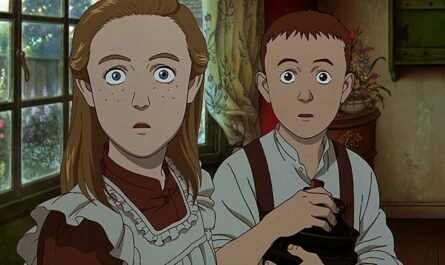The realistic depiction gives me goosebumps.
While some traumatic scenes in anime that instill fear in viewers are impossible, some could happen in real life. In this article, we look back on some traumatic anime broadcast on Fuji TV.
This article contains essential information about “Tokyo Magnitude 8.0”. Please be aware of spoilers. “Tokyo Magnitude 8.0”, which aired in 2009, is set in Tokyo after a large earthquake of magnitude 8.0 hits it and tells the story of the main character “Miki Onozawa” and her younger brother “Yuki,” who return to their parents with the help of the adults they meet. It was created based on extensive research and verification, and the realistic disaster is depicted in detail. For example, many viewers were horrified by the realistic depictions, such as the scene where the Tokyo Tower, which had tilted during the main earthquake, collapses due to an aftershock and the scene where the transported people are sorted by priority according to urgency and severity of injury.
Also, at the end of the series, the sad truth that Yuuki, who had been accompanying them, had died along the way and that it was all a vision of the future awaited. Despite being a short series of 11 episodes, the realistic depictions and story have received comments such as, “It’s so scary that people who have trauma from earthquakes can’t watch it. It makes you miss your family,” and “When I thought that it could happen to me someday, I was drawn in all at once.” Next, “PSYCHO-PASS,” famous for its many grotesque scenes, also depicts a worldview that could happen in reality.
The story is set shortly, where the “Sibyl System,” which quantifies a person’s psychological state and personality, has been introduced. People with a high crime index, or “crime coefficient,” are subject to isolation and removal as potential criminals, even if they have not committed a crime. As a result of the Sibila System’s safety, people’s vigilance has been reduced, and in episode 14 of season 1, even when a person with a false crime coefficient murders a woman on the street, no one reports it because they don’t think it’s dangerous. On the contrary, a strange scene was depicted, and someone even filmed the incident.
Some have expressed their horror at this controlled society: “The fact that the majority of people don’t question the system makes me feel the horror of totalitarianism that has stopped thinking.” In contrast, others seem to fear the development of technology, saying, “When I watch the news these days, I think the world of ‘PSYCHO-PASS’ is finally becoming more realistic.”
In addition, Ubukata Tou, who has been involved in the series since the second season, said in an interview, “As time passes while we are making it, society gradually becomes closer to the world of the work.” Although it was not broadcast on Fuji TV, “Serial Experiments Lain” (broadcasting station: TV Tokyo), which was broadcast in 1998, also has something to do with the present day.
This work is set in a world where the internet terminal “NAVI” has become widespread. The boundary between reality (real world) and virtual space (wired) becomes blurred when the protagonist, “Iwakura Rei,” receives an email from a classmate who committed suicide. In the work, people who are absorbed in surfing the internet and wearing VR goggles are also depicted.
The appearance of these people, whose reality and virtual worlds have blurred, is reminiscent of modern people addicted to social media and online games, and many viewers will feel a sense of déjà vu. Although it was made 27 years ago, it has a sharp depiction of the essence of the internet society. Some have praised it as “a work that hits the essence of today’s network society in an era before social media.” In contrast, others have been deeply impressed by the “gloomy atmosphere and vividness created by the delicate drawings cut deep into your heart.”











